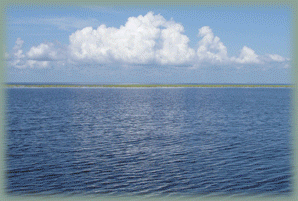 The Water Management Section monitors and manages the multi-purpose operations of spillways, locks, pump stations, culverts, canals, reservoirs, and water conservation areas located in the Central and Southern Florida (C&SF) Project, the Four River Basins (FRB) Project, and the Portugues and Bucana (P&B) Rivers Project.
The Water Management Section monitors and manages the multi-purpose operations of spillways, locks, pump stations, culverts, canals, reservoirs, and water conservation areas located in the Central and Southern Florida (C&SF) Project, the Four River Basins (FRB) Project, and the Portugues and Bucana (P&B) Rivers Project.
NOTE: South Florida Water Management District (SFWMD) has converted their water level reporting to the new NAVD 88 standard, established in 1993 as the official vertical datum in the National Spatial Reference System for the United States. The U.S. Army Corps of Engineers (USACE) still has additional programming that must be completed before it will be ready to change from NGVD 29 to NAVD 88. Until USACE makes the change, you will see different numbers on the two websites to reference the same measurement.
Our Daily Reports and Graphical Plots show current water level and flow data. Some graphical plots show near realtime data.
The C&SF project is a multi-purpose project that provides flood control; water supply for municipal, industrial, and agricultural uses; prevention of saltwater intrusion; water supply for the Everglades National Park (ENP); and protection of fish and wildlife resources. It involves an area of about 18,000 square miles, which includes all or part of 18 counties in central and southern Florida.
We acknowledge the cooperative efforts of the following federal and state agencies: U.S. Geological Survey, National Weather Service, Everglades National Park Service, South Florida Water Management District, St. Johns River Water Management District and Southwest Florida Water Management District.
View the Okeechobee Waterway Spillway web cameras.